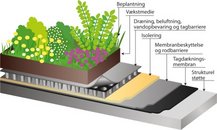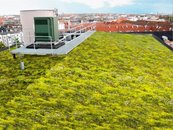


| AU project lead: | Marianne Zandersen |
| Participants: | Anne Jensen, Mette Termansen, Gazelle Buchholtz, Britta Munter, Morten Blemmer, Henrik Gundorph Bruun, Anne Holst Andersen |
| Financed by: | Coordination Unit for Climate Adaptation (KFT) |
| Budget : | 310,000 dkk |
| Duration : | 1/4 2012 – 31/12 2012 |
| Links: | Report |
Effects of climate change are particularly challenging in urban areas. The high concentration of impervious surfaces significantly modifies energy exchanges and hydrological processes leading to heat islands and a higher rate and volume of surface runoff of rainwater. Meanwhile, humanity is rapidly urbanising and there are significant technical, social and institutional vulnerabilities due to uncertainties and surprises in climate impacts that cannot be avoided.
Policymakers and urban adaptation strategies are increasingly accepting and calling for the need to work actively with ecosystem-based adaptation approaches, i.e. nature’s capacity to absorb and control impacts of climate change while offering a number of co-benefits such as aesthetics, biodiversity, improved mental welfare and property/neighbourhood improvements. Using an ecosystem based approach can be more economically, socially as well as ecologically just and efficient compared to focusing exclusively on technical solutions.
In this pilot study, we investigate the prospects and conflicts of systematically applying an ecosystem based approach to climate adaptation in the municipality of Copenhagen. Focusing on green roofs as one example of implementing green infrastructure for climate adaptation, we quantify the potential for green roofs in the Municipality of Copenhagen; examine the prospects of integrating ecosystem-based climate change adaptation in urban policies; and analyse areas of potential conflicts between ecosystem-based approaches and other drivers of urban development in cities, such as the increasing urbanisation and expanding built environment.
We combine quantitative and qualitative methods from the fields of environmental economics and environmental sociology.